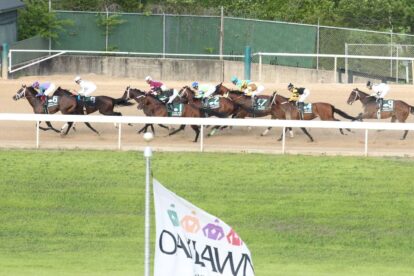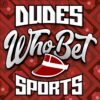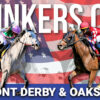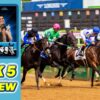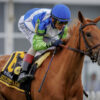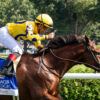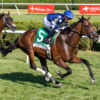Remember your first day at the track?
You likely felt lost, overwhelmed, and totally unaware of how complicated this sport actually gets. You probably listened to everything you overheard from people standing or sitting around you and tried to act like you understood your program, even though you had no idea what anything meant.
I remember my first on-track experience like it was yesterday. Despite so many of my friends telling me how much fun it was, I didn’t get into horse racing until my late 40s. I’m not a regular gambler; throwing away money on slots and choking to death on cigarette smoke hold no appeal to me. Also, I NEVER win, not EVER, but I figured this type of gambling – betting on a horse – was different.
Before taking the plunge and heading to Oaklawn Park for my first taste of live, in-person horse racing, I consulted with my good friend and legendary handicapper (although I didn’t know that at the time) Todd Bassore. I wanted to make this journey as easy and enjoyable as possible, but I had several questions:
- How do I bet?
- Where do I sit?
- Is there plenty of parking?
- How much should I bet each race?
- How do I know how much I win?
I’m telling you, I knew nothing, and I don’t like doing something I have no knowledge of, especially, when I’m risking hard-earned cash. As usual, though, Todd came through with sound advice.
He suggested I only bet $2 or $4 to win; nothing fancy. I think my answer was, “You mean you can bet something on a horse other than to win?” He was very polite (although I think I detected a snicker or two) but advised that I try to conquer that side of things on another day. I could handle that.
Todd suggested that I visit a helpful website (like this one!) that explains how odds and payouts work. He told me where to sit, where to park, where to get a program, and that I should safely hold onto every betting ticket. All very sound and much appreciated advice, but then he told me that I was going to fall in love with the sport. Hmm, I wasn’t sure about that.

After making the 5-hour trek south from my home in southwest Missouri (read more about THAT fun experience here), I parked the car and headed for a seat on the third level of the grandstand, joining several other fans who were poring over their respective programs, but I had zero clue what I was looking at or for. I glanced at the names of the horses, the trainers, the jockeys, hoping that even one would ring a bell. Unfortunately, none did.
And then, legendary race caller Terry Wallace’s voice came over the PA system and said, “Here are the program changes and overweights for today’s card. Please check your programs and mark these changes.” Suddenly, a hush fell over the grandstand as everybody began marking their programs, so of course I did, too.
Wallace continued:
- “Race 1: #2 is scratched. Scratch #2.”
- “Race 2: There are no changes. No changes in Race #2.”
- “Race 3: #7 has a rider change. The new jockey is Mike Smith.”
That caused a huge reaction from my fellow bettors, so I wrote “Mike Smith” and put a big star beside it (okay, I admit I did that because some lady sitting two rows down from me did it first).
- “Race 4: #8 is 2 pounds overweight.”
Why is a horse overweight? (Terry was referring to the jockey, but I didn’t know that)
- “Races 5, 6, and 7: There are no changes. No changes on 5, 6, and 7.”
- “Race 8: #6 is scratched.”
- “Race 9: #2 had a workout on March 6 that is not in your program. He ran 5 furlongs in” (some damn time that I didn’t catch) “and finished 22nd out of 55 runners.”
My fellow bettors didn’t seem too interested in that last tidbit, so I ignored it, too.

With the program changes over, I eavesdropped on some of my neighbors sitting around me (surely they knew more about this than I did), but they were speaking some sort of gibberish that I didn’t understand and couldn’t decipher. I almost called out some Japanese from WWII to see if they could break the code.
Some examples of what they thought about the field in the first race (followed by what I thought about their thoughts):
- “#2 is a speed horse and him and the 4 should set the pace!” – Okay, so what?
- “You better watch the 1 because Calvin Borel is riding him and he loves the rail and he’s got just what he wants.” – I know what the rail is, but why does old Calvin love it? (as I later found out, this is why)
- “The 6 is coming off a win, but that was at Delta Downs and he’s in against much tougher here.” – What the hell is Delta Downs?
- “I think I’ll take the 7 because he’s in orange. I like orange and the number 7 is lucky!” Finally, some logic I could understand!
Suddenly, everyone stood up. What the heck was happening now?!
Then the lead ponies, the race horses, and their jockeys appeared on the track for something called a post parade that let me see the first race’s participants.
I kept an eye on the #2 and the #4 because I’d heard from my new buddies that they were speed horses, but they looked the same to me. #1 with the legendary Calvin Borel in the saddle looked the same to me, too. In fact, they all looked the same to me, except for two of them.
One was a gray horse who I thought might be a donkey; my educated eye quickly eliminated him. The other, though, I couldn’t stop watching. The #3 was a beautiful chestnut-colored horse who was prancing like a champ and whose coat glistened under the warm Spring sun. How could a horse be any prettier?
I glanced at the tote board (I don’t recall how I knew what a tote board was, but I did) and my gorgeous horse was 3/1, so other people liked him, too. The only things I knew were that he wasn’t a speed horse, he didn’t have Calvin Borel riding him, and he wasn’t lucky #7.
Those weren’t enough to deter me from liking him, so with my limited knowledge, what else could I find out about him that would make me put $2 on him to win? I didn’t recognize, the jockey but why would I? As the #3 horse, his saddle cloth color was blue (my favorite color!), my grandson was 3 years old at the time (a sure sign from above), his odds were holding steady at 3/1, and he was so damn good-looking that he was the obvious choice for me! I had now studied and arrived at my first pick at the track.

It was time to place my bet, but that wasn’t as easy as I thought it would be. I continued practicing in my head what I’d learned about the proper way to place a bet: name of the track, number of the race, number of the horse, and amount of the bet.
I confidently strode up to the window and said, “Oaklawn, 1st race, #3, $2 to win.” The bet-taker (that’s what I called her) smiled and said, “First time at the track, right?” Damn, how did she know?! I nodded my head yes, grabbed my ticket, and much less confidently walked back to my seat.
I was much more nervous than I anticipated being as I waited for the race to start. The horses entered the gate and blasted out in unison, and just as my buddies predicted, the #2 and the #4 took the lead around the first turn and sprinted off like bullets heading for their intended targets.
My heart sank as my #3 sat in seventh out of nine runners and trotted at a turtle’s pace while seemingly looking at me as if to say, “I can’t believe you bet on me, dumbass.”
As they went down the first straightaway (by race 4, I learned it was called the backstretch), the #2 and the #4 widened their gap as my #3 slowly moved up to sixth. “He’ll never catch them,” I murmured to myself.
As they entered the far turn, I thought I noticed that the trailing horses were gaining on the #2 and the #4. Where was my #3 horse? He was still loping along and had moved up to fifth. “Run, you idiot!” I thought. “Is that the only speed you have?!”

The horses finished the last turn and were now on the straightaway (the home stretch, as I found out by race 5). By this point, the race had definitely tightened up. The #2 and the #4 gamely tried holding on but were definitely tiring, and here came my gorgeous #3, running like Secretariat and eating up ground with every stride.
I stood straight up and begged him to give some more, just a little more, one more last push, and he kept rolling! He crossed the finish line first by 1/2 of a length and I was so proud of myself for not only picking the winner in my first try, but for being very nonchalant about it. I exerted a small, clenched-fist “Attaboy” and sat back down.
No need to gloat or brag about my shrewd handicapping skills; I was a good winner.
Now, I’d love to say that the rest of my day (and the next day) at the track went just as well, but we all know that doesn’t happen. Still, I won enough during those first visits that I quickly caught the fever of spending a day at the track. I was and still am hooked.
Always encourage new fans to attend live racing and try educating them before going! Getting people to the track is the best way to help this game grow.
I’ll continue exploring reasons why we love horse racing like we do and I hope that my columns help you recall memories of your first day betting on the ponies at the track.

